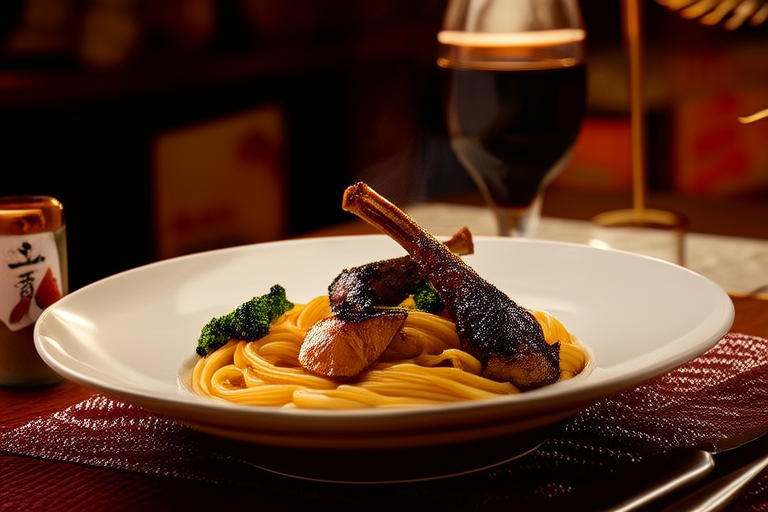Flavors of the World: A Gourmet Traveler’s Guide

“`html
Flavors of the World: A Gourmet Traveler’s Guide
Introduction
Gourmet travel has become increasingly popular, offering travelers the opportunity to explore the rich tapestry of global culinary traditions. This type of travel is not just about indulging in exquisite meals but also about understanding the cultural significance behind each dish. The flavors of the world are as diverse as the landscapes that produce them, reflecting the unique histories, geographies, and climates of their regions. From the bustling streets of Tokyo to the sun-drenched vineyards of Tuscany, every corner of the globe offers a unique gastronomic experience that can enrich your travel adventures.
Exploring culinary traditions allows you to connect with local communities on a deeper level. It’s an immersive way to learn about the history, customs, and daily life of people across the world. Whether it’s savoring street food in Vietnam or enjoying a multicourse meal in Paris, each bite tells a story. This guide will take you through some of the most exciting culinary destinations and provide insights into lesser-known regional cuisines, sustainable gastronomy practices, and tips for the best gourmet travel experiences.
Key Destinations for Gourmet Travelers
Japan
Japan is a paradise for food lovers, where precision and artistry meet in every dish. Signature dishes like sushi, ramen, and tempura showcase the country’s commitment to fresh, seasonal ingredients. Traditional cooking methods such as grilling over charcoal or simmering in soy-based sauces are integral to Japanese cuisine. Must-visit spots include Tsukiji Outer Market in Tokyo, where you can watch chefs prepare the freshest seafood, and Kaiseki restaurants that offer a multi-course tasting menu.
Italy
Italy’s culinary scene is synonymous with simplicity and quality. Dishes like pasta, pizza, and risotto are staples, but each region adds its own twist. Northern Italy emphasizes hearty, butter-based dishes, while Southern Italy leans towards olive oil and tomato-heavy recipes. Visit Trattorias and Osterias for authentic experiences. In Rome, try Da Enzo al 29 for classic Roman fare, and in Naples, Pizzeria Brandi is famous for its wood-fired pizzas.
Mexico
Mexican cuisine is vibrant and flavorful, blending indigenous ingredients with Spanish influences. Dishes like tacos, tamales, and mole exemplify the complexity of Mexican flavors. The use of spices like chili peppers and herbs like cilantro is common. Head to markets like La Merced in Mexico City for an array of fresh produce and street food vendors for authentic tacos al pastor.
France
French cuisine is renowned for its elegance and sophistication. Classic dishes such as coq au vin, bouillabaisse, and crème brûlée are beloved worldwide. French cooking techniques, like sautéing and braising, are meticulously executed. In Paris, Le Jules Verne at the Eiffel Tower offers stunning views along with exquisite French cuisine. In Lyon, Bouchon restaurants serve traditional Lyonnaise dishes.
Regional Cuisine Spotlight
Beyond the well-trodden paths, there are many regional cuisines that deserve attention. These areas often have unique flavors shaped by their geography, climate, and history. For example, the coastal regions of Kerala in India are known for their fish curries and use of coconut milk. In the Andes of Peru, potatoes and quinoa are staple ingredients due to the high altitude agriculture. In Morocco, the medina markets are filled with spices like cumin and saffron, used in tagines and couscous.
Travelers can find authentic dining experiences by visiting local markets, attending cooking classes, or staying in rural accommodations. These opportunities allow visitors to engage directly with the communities that create these dishes, learning about the techniques and stories behind each meal.
Sustainable Gastronomy Practices
Sustainability is a growing concern in the culinary world, with many chefs and local communities adopting eco-friendly practices. Supporting local producers helps reduce carbon footprints and promotes biodiversity. Reducing food waste is another crucial aspect, with initiatives like composting and recycling being implemented in kitchens.
Eco-friendly dining options include farm-to-table restaurants that source ingredients from nearby farms, minimizing transportation emissions. Some restaurants even grow their own herbs and vegetables on-site. By choosing these establishments, travelers can contribute positively to the environment while enjoying delicious meals.
Tips for Gourmet Travelers
Navigating unfamiliar food scenes requires openness and curiosity. Start by researching local specialties and trying street food to get a taste of everyday cuisine. Always respect cultural norms, such as table manners or religious dietary laws. If you have dietary restrictions, inform your hosts or waitstaff beforehand.
To engage more deeply with local food cultures, consider participating in cooking classes or visiting local farmers’ markets. These activities provide hands-on experiences and foster connections with locals. Additionally, joining food tours led by knowledgeable guides can offer insights into the history and significance of various dishes.
Conclusion
From the bustling streets of Tokyo to the vineyards of Tuscany, gourmet travel offers endless opportunities for discovery and enjoyment. Each region has its own unique flavors and culinary traditions that reflect the local culture and history. By embracing the adventure of discovering new tastes, travelers can gain a deeper appreciation for the world’s diversity.
We hope this guide inspires you to plan your next gourmet travel adventure. Whether you’re sampling street food in Vietnam or enjoying a multicourse meal in Paris, each bite tells a story. So, pack your appetite and set off on a journey to explore the flavors of the world.
“`